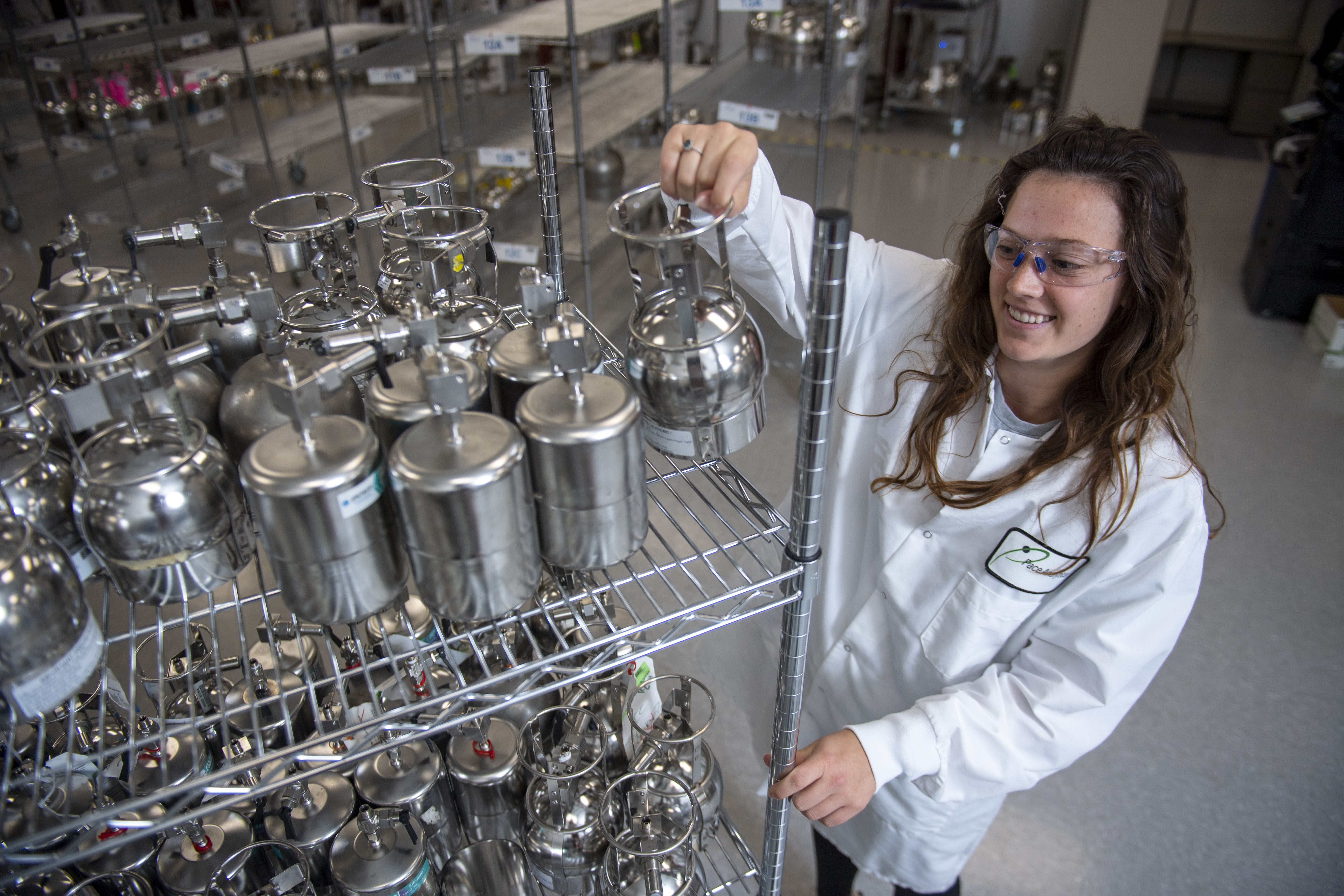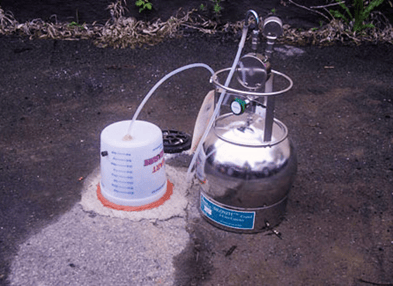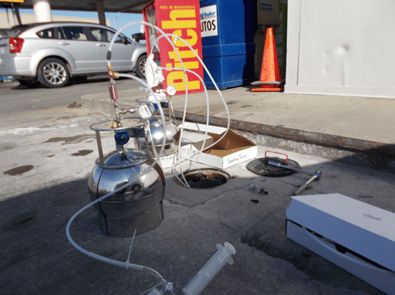What Can Impact Vapor Intrusion Investigations?

An Interview with Chris Johnson, Product Manager - Air
Did you know that testing has shown certain tubing and other sampling media can potentially emit or adsorb VOCs which may impact the results of vapor intrusion (VI) testing? This becomes important when sub-ppbv reporting limits are required for soil gas sampling to risk-based screening levels. To meet the risk assessment goals of soil gas samples, Pace® is often required to report compounds of concern down to the part per billion ranges or lower.
Sherri Lloyd, Product Marketing Manager at Pace® speaks with Chris Johnson, Air Product Manager for Pace® to gain insight into the potential for VOCs that may be introduced from tubing or other collection media during a Vapor Intrusion sampling project.
Chris, how should you go about selecting the appropriate sample tubing, collection media, and leak check compounds?
Most people assume that achieving a risk-based screening level for a contaminant in soil/gas is based on the analytical sensitivity of the instrumentation. However, the results generated by a laboratory are also a function of sample collection and storage. That means that the materials used need to be evaluated against the data quality goals of the project.
Thanks, Chris. Now let’s take a closer look at the evaluation of tubing. How would you go about selecting tubing?
Tubing is used to connect the soil gas probe to the sample train. There are generally three types of tubing used – nylon, fluoroethylene-propylenne(FEP), and low-density polyethylene, each offering different features.
PTFE/FEP tubing (Teflon®) offers incredible durability and stress resistance, which makes it suitable for use in temperatures ranging from -454°F to 500°F. PTFE/FEP tubing also features:
- the lowest coefficient of friction of any polymer
- superior chemical resistance to all common solvents, acids and bases
- biocompatibility to USP Class IV standards
- excellent dielectric insulation properties
- flame resistance to UL 94 VO
PTFE/FEP is an FDA-approved raw material and offers excellent mechanical resistance, even in extreme conditions. Because of these characteristics, this type of tubing tends to demonstrate the best performance with very low VOC background and excellent inertness.
Low-density and linear low-density polyethylene are also popular, budget-friendly choices of tubing for environmental applications. Inertpolyethylene tubing provides a high flow rate suitable for use with sample collection utilizing canister vacuum, pumps, or positive system pressure. However, unlike PTFE, polyethylene tubing is not resistant to corrosive chemicals and can degrade with long-term exposure to ultraviolent light.
Nylon tubing, which is made from polyamide resin, may also be used. It is versatile, has a strong resistance to abrasion and is used in high-pressure and high-temperature applications.
In practice, however, the person doing the sampling often uses tubing from their own inventory without recognizing the potential impact of the choice on sample integrity or results. The selected tubing may contain contaminants or may not be the best option for the test environment. For information on tubing that won't impact your samples we recommend that you reach out to your local Pace® lab for product recommendations.
Like what you are reading? Get articles delivered directly to your inbox. Subscribe here.
Now that we have covered tubing, can you explain how the canister potentially impacts results?
When a sample is collected in a canister, it’s capturing many more compounds than just those of interest. We want to make sure we can positively identify and quantify the compound of interest underneath all that other clutter. Our stringent cleaning processes help ensure that the canister isn’t the source of the questionable analytes. For this reason, Pace® is selecting silonized (inert) canisters over electropolished stainless steel for all current and future canister purchases.
Let's talk about compounds that could compromise VI projects. With a team that has spent years observing thousands of samples, what are the compounds of interest you and the team look for? And, can you explain how they can compromise vapor intrusion testing?
One compound of concern that can be detected in the canisters is Acrolein, especially in samples that contain high levels of certain polar compounds such as acetone and ketone. Those compounds may react with the canister walls in low humidity conditions causing its formation. The longer the hold time between sample collection and analysis, the greater the chance that increased amounts of Acrolein will be detected. Therefore, samples should be analyzed as soon as reasonably possible after collection.
Another compound of interest is 1,3-Butadiene. It is an important industrial material used primarily in the manufacturing of synthetic elastomers, such as rubbers and latexes and can be found in asphalt paving, patch, seal coat and tires. It may also be formed locally by combustion processes such as auto exhaust. 1,3-Butadiene degrades readily in the atmosphere, with a half-life of a few hours to days, and as a result is rarely present at levels of concern in ambient air or soil vapor. When it is determined to be present in soil gas, it is commonly found in the presence of carbon disulfide which indicates that it may be a product of microbial degradation of hydrocarbons by bacteria.
Naphthalene is another problematic compound that is often detected in indoor air. It is contained in consumer products such as mothballs and certain insect repellants. It is also a component of asphalt and particulate matter (dust) that may enter a building in air or be tracked in via footwear. Naphthalene may also be present in crawl space samples or sub-slab soil gas samples due to past pest treatments. For sites with gasoline, fuel oil or other petroleum product-impacted groundwater plumes, naphthalene may be a concern. In such cases, however, naphthalene will be one of several petroleum VOCs that are present. If only naphthalene is found in the shallow subsurface and indoor air at concentrations that exceed screening levels, the source of the naphthalene is unlikely to be VI. In general, engineering controls are unlikely to be effective if VI evaluations show that 1,4-dichlorobenzene, chloroform, and/or naphthalene are the only compounds present with exceedances. Non-VI sources should be assumed to be present and/or potentially significant.
I think leak-testing is the last area I want our readers to have some insight into. How do you select a leak-checking compound that does not impact sample viability?
Various leak check compounds are suggested in regulatory guidance. They range from “over the counter” products such as 2-Propanol (rubbing alcohol) and Isobutane (shaving cream) to gases such as Helium and Sulfur Hexaflouride.
Here are a few factors to consider when selecting a leak compound for soil gas sampling at a VI site:
- The leak check compound should not be present at the contaminated site
- Potential analytical interference from the leak check compound needs to be evaluated because the presence of leak check compounds in the soil gas sample may compromise the laboratory reporting limits even at concentrations considered to pass leak test criteria
- Consideration should be given to the purity of the leak compound, especially if using over-the-counter products.
Chris, any concluding statements?
It is critical to work with the experts at Pace® to coordinate – not only the scheduling of your VI event – but also to make sure you have the correct tubing and canister. In addition, ensure that you are using an appropriate leak check compound in your project. This will reduce the occurrences of unexpected detections or interference from the sampling media. Scheduling also ensures equipment availability and lab preparedness for client samples.
Watch our On-Demand Video
TO-15 ANALYSIS AND EVALUATION OF PROBLEMATIC COMPOUNDS
Pace® Air Team can provide Vapor Intrusion Guidance.
Contact Us Now

.png)
